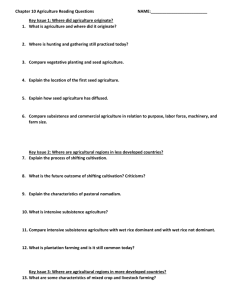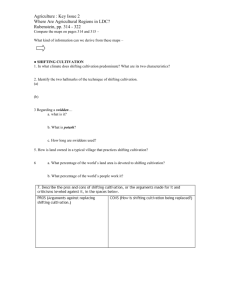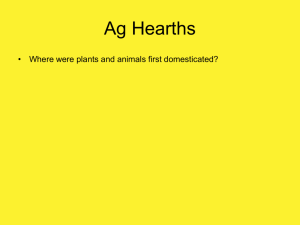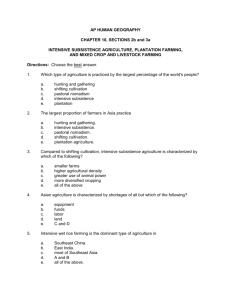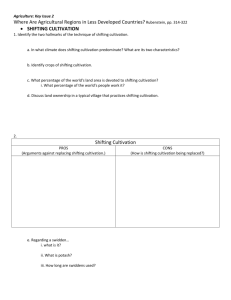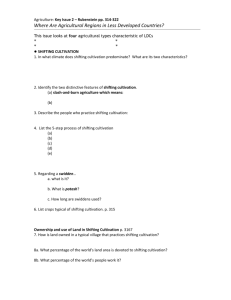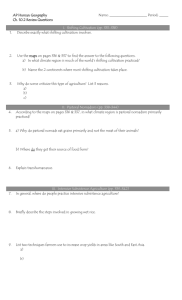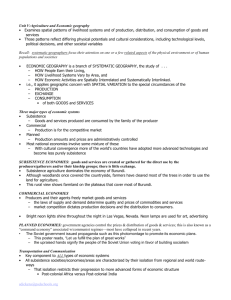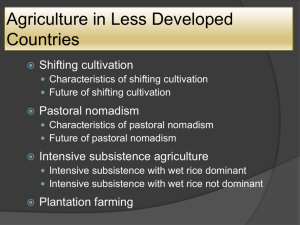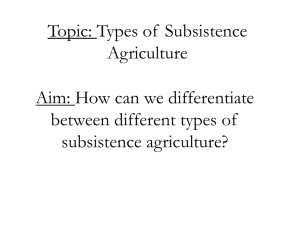Subsistence Agriculture - Mr. Tredinnick, Social Studies
advertisement
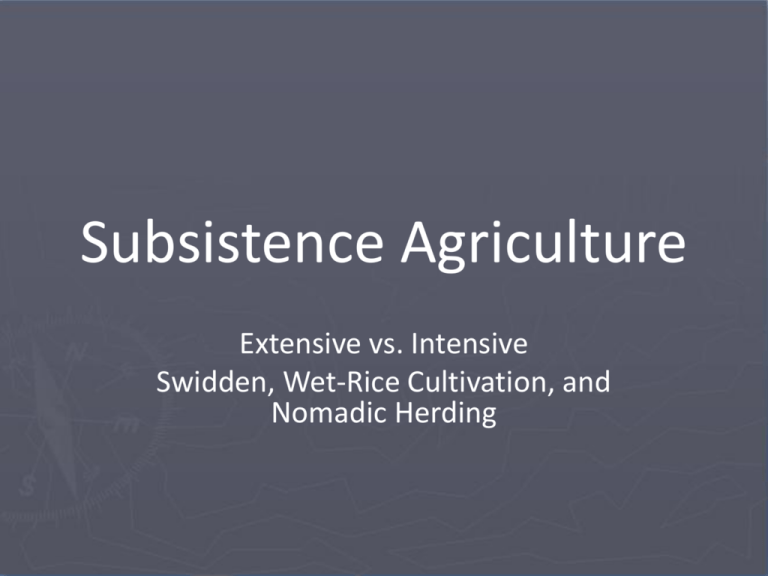
Subsistence Agriculture Extensive vs. Intensive Swidden, Wet-Rice Cultivation, and Nomadic Herding Types of Agriculture: Subsistence versus Commercial Subsistence • Family or social group works together • People live on food they grow • Small surplus traded or sold locally Commercial • Products raised for market • Low consumption of food by farmers Extensive versus Intensive Extensive • A lot of land • Slash and Burn • Nomadic Herding • Less labor Intensive • Small amount of land • Labor intensive • Wet Rice Extensive Subsistence Agriculture Intensive Subsistence Agriculture Shifting Cultivation • Also called slash-and-burn or swidden • Practiced in Tropical rainforests • Amazon • Congo • East Indies Process for Shifting Cultivation • Cut down non-useful trees and shrubs • Burn felled trees to release nutrients into soil • Clear space and till soil for agriculture Problems of Shifting Cultivation • Sustainability – Land is only productive for 2-5 years • Then needs to sit fallow for 15-20 • In-efficiency – 20% of land used to feed 5% of population • Deforestation • Loss of native flora and fauna Wet-Rice Cultivation • Paddy rice farming • Intensive Subsistence • Tropical regions, nutrientrich, with monsoon seasons – China – Philippines – India Labor Intensive Process • Field Preparation – Build, repair, clean canals and dikes – Plow and smooth soils in paddies – Grow seedlings in nursery • Planting – Plant seedlings – Raise water level as plants grow – After flowering, water level is lowered • Harvesting – Rice stalks hand picked Nomadic Herding • Subsistence Agriculture – Changing more so to wage earning business • Arid, Semiarid, and Arctic Regions – Migratory based on trend of herds • Horizontally – Across a large area • Vertically (transhumance) – Changes in elevation – Declining Lifestyle • Cultural diffusion and governmental regulations Location of Nomadic Herding Agriculture
